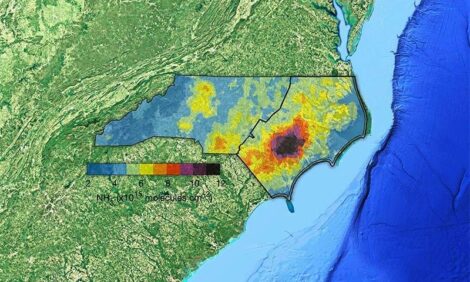



Ceva Valora® as an Efficient Alternative to Surgical Castration
I. Kiss (Ceva, Scientific Support and Investigation Unit, Ceva-Phylaxia Ltd., Budapest, Hungary), V. Palya, R. Krejci, P. Mazerolles (Ceva, Libourne, France).Introduction
Male pigs are castrated in order to limit or eliminate problematic aggressive behavior, uncontrolled mating and a boar taint, which represents a significant food quality problem. It is desirable for the welfare reasons to avoid surgical castration. Vaccination against boar taint utilizing the immune response to neutralize the endogenous LHRH (GnRH) is an efficient alternative which brings additional benefit of better feed efficiency. The aim of this study was to compare a new vaccine Ceva Valora® (Ceva) to a previously licenced product and assess the efficacy of a variable vaccination protocol.
Materials and methods
Groups of pigs were vaccinated either with Ceva Valora (1ml s.c.) or with the competitor product (2ml s.c.) at eight weeks of age, then a second injection was applied four (Group V4 and I4), six (Group V6 and I6) or eight (Group V8 and I8) weeks before slaughter (at 26th week of age). Each group consisted of 10 pigs. The anti-LHRH antibody levels and the testosterone concentration were measured two weeks after booster vaccination and at slaughter time, while the concentrations of indole, skatole and androstenone were measured at slaughter time.
Weight and size of testicles were assessed as one of the major efficacy criteria.
Results
Serological response to vaccination showed higher anti-LHRH titres in sera of pigs vaccinated with Ceva Valora® and a longer duration of high antibody titre than the ones obtained by the competitor vaccine.
Fig. 1. Antibody response 2 weeks after booster vaccination
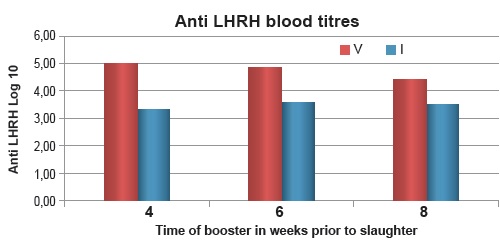
Fig. 2. Antibody response at slaughter
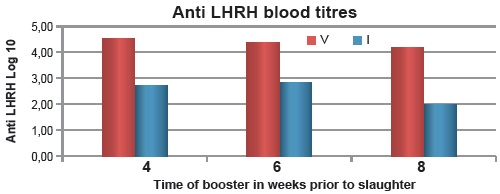
The concentrations of testosterone at slaughter were lower on average in Ceva Valora® groups than in the competitor vaccine groups, in which some individuals exceeded the levels >7 nmol/L.
Tab. 1 : Blood testosterone levels at slaughter

The concentrations of androstenone were below 0.04 mg/kg of fat in all pigs except one individual in I4 group with the concentration 0.54 mg/kg. This pig had also the biggest testicles and highest testosterone. The average testicle size in all groups vaccinated with Ceva Valora® was smaller than in competitor vaccine groups. The difference was statistically significant between groups V4/I4 for the length and for the weight.
Fig. 3. Testical lenght at slaughter
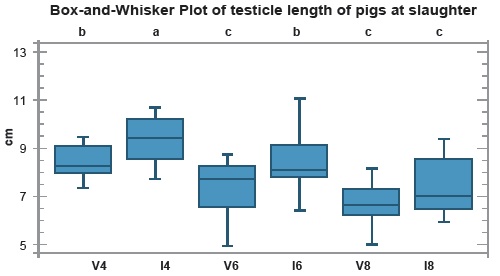
Fig. 4. Testical weight at slaughter
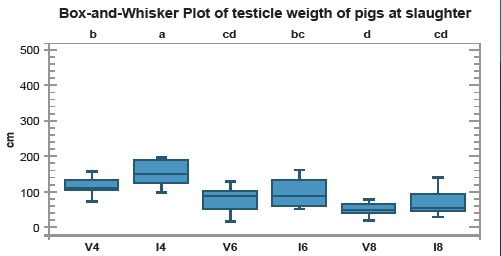
Conclusions
The results indicate that vaccination with Ceva Valora® can result in highly efficient immunocastration. Compare to a competitor licensed product, Ceva Valora® had better performance in reducing the testicle size and weight and induce higher anti-LHRH antibody levels.






